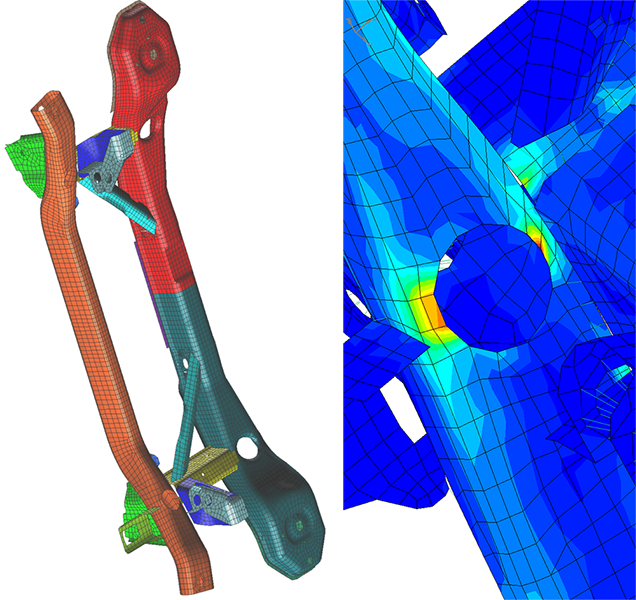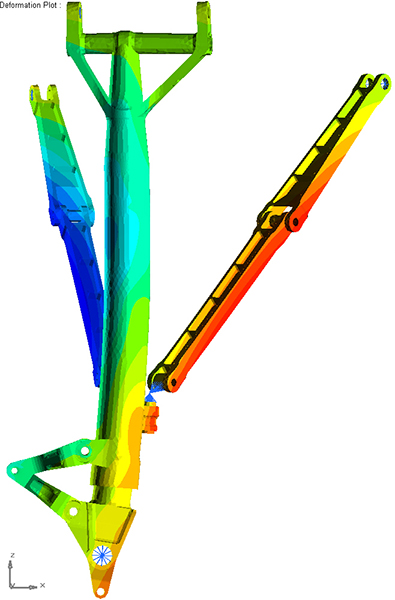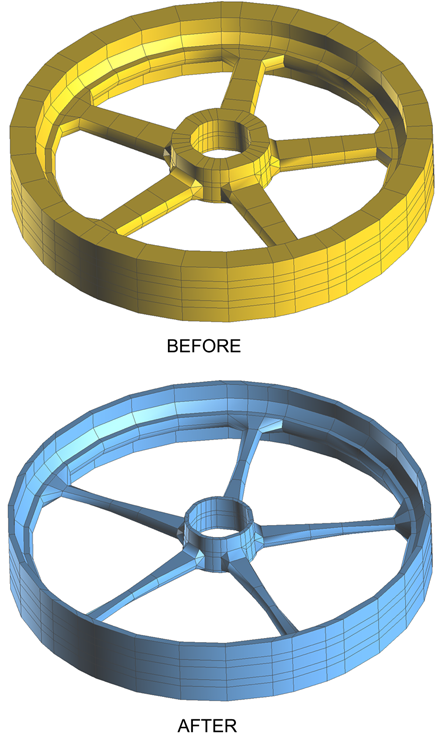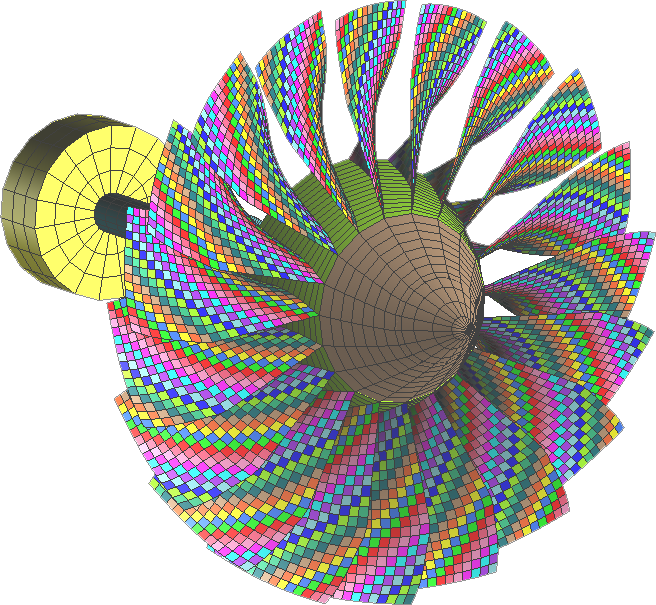MSC Nastran is the world’s leading multidisciplinary finite element strength analysis software. MSC Nastran was developed in the 1960s for NASA as general purpose strength analysis software. Currently, MSC Nastran enables static and dynamic simulations and analyses, including vibration and thermal analyses, as well as fatigue analyses, in the full linear and non-linear range. The software can be run in parallel mode, therefore, high performance of numerical simulations is ensured. Moreover, the MSC Nastran software is complemented with the ability to conduct automated optimization of the structure.
MSC Nastran software allows engineers to analyze the stress and strain state of various types of machine parts and structures, as well as fatigue analysis. Thanks to the numerical simulations, engineers can eliminate potential problems resulting from excessive stresses, resonance, buckling or too large deformations already at the design stage.
Typical applications of the MSC Nastran:
- Virtual prototyping in all phases of design, production, service as well as recycling.
- Removal of construction defects detected during usage.
- Optimization to improve technical parameters and reduce costs.
Multidisciplinary Structural Analysis
MSC Nastran allows engineers to perform complex multi-discipline analysis within a single environment.
- Static and dynamic strength analyzes in the linear and non-linear range, taking into account additional interactions related to, for example, friction, heat transfer, external flow field and acoustic field.
- Fatigue analysis using the CAEfatigue approach to predict fatigue life in an efficient and fast way.
- Calculations of composite structures produced by any technique with a built-in fatigue analysis function and the possibility of multi-scale modeling of materials (Digimat package).

Structural Assembly Modeling
Analysis of complex assembly structures in the MSC Nastran software involves the creation of an assembly combined of structural parts that are connected and interact within a single system. MSC Nastran allows individual parts to be joined together using a variety of techniques to provide an accurate and efficient strength analysis approach.
- Connections of incongruent computational meshes using the so-called permanent glue joints. This technique allows to significantly reduce the time needed for mesh generation.
- Special connector elements for modeling welded, welded, riveted and bolted connections, taking into account preload and friction.
- Create entire assemblies of components without additional connection elements or worry about the ID numbering schemes.
- Speed-up subsequent analyzes by modeling complex structures using the division into superelements. Moreover, the exchange of information within a project can be realized through the use of superelements, and therefore allowing to protect your know-how and fullfining confidential restrictions.
- Contact analysis of multi-component designs taking into account various types of contact between parts with the ability to determine stresses and contact regions.
- Automatic Contact Generation feature to automatically generate contact bodies and define the contact relationships of complex structures.

Automated Structural Optimization
Optimization is the key part of systematic design search of new products or processes. MSC Nastran allows engineers to perform fully automated structural optimization with advanced optimization methods and algorithms.
- Optimization to minimize stress, weight, etc. by changing design variables such as material properties, geometric dimensions, load distribution, etc.
- Optimization of the shape or profile of structural elements.
- Topography optimization to determine optimal bead or stamp patterns for sheet metal stamping.
- Optimization of composite laminate ply thicknesses and orientation angles.
- Topology optimization to remove unnecessary volume.
- Multidisciplinary and multicriteria optimization of multiple models across disciplines.
After optimization in the MSC Nastran, you can compare the results achieved with the requirements and constraints and select the optimal design solution.

High Performance Computing (HPC)
MSC Nastran features a number of high performance computing capabilities allowing it to perform fast and accurate analysis of large and complex structural models. The following methods and techniques are available in the MSC Nastran to increase computational efficiency.
- Computations on mulit-core and mulit-node clusters using Shared Memory Parallel and Distributed Memory Parallel technologies.
- Parallel computing using multi-core GPU cards.
- Automatic selection of the most efficient computational solver for an analyzed problem(element types, solution type available memory, etc.).
- Modal analysis using a highly tuned Lanczos solver or Automated Component Modal Synthesis approach.


